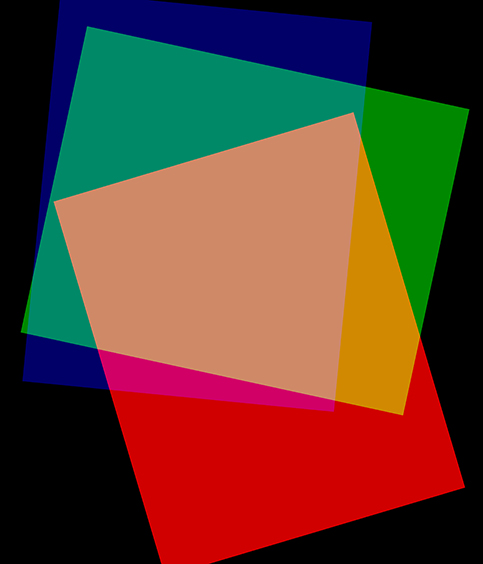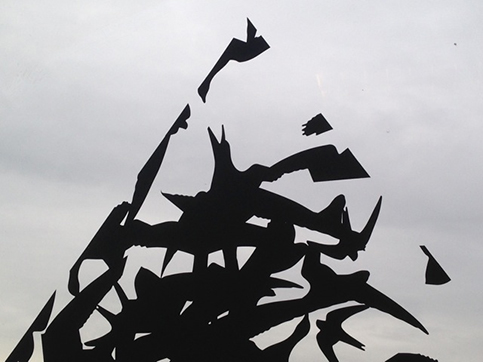|
15 March – 18 May 2014
Lisa Oppenheim
‘From Abigail to Jacob (Works 2004–2014)’

Lisa Oppenheim
‘Multicultural Crayon Displacement (Peach II)’, 2008
Unique Cibachrome photogram, 50,8 x 43,2 cm
Courtesy the artist, The approach and Galerie Juliètte Jongma
Over the past decade, artist Lisa Oppenheim (b. 1975, US) has steadily developed a unique body of work exploring the usage of (historical) imagery. Balanced between appropriation and reconstruction, her work relies on substitutions applied to photographic and filmic records through which the historical and the present are transmitted and constituted through a language of today. One could define her work as an archaeology of time and visual culture. By exposing or even re-exposing archival material, Oppenheim bridges the past and the present by introducing new meaning to these historical images, often resulting in film and photographic projects.
‘From Abigail to Jacob (Works 2004–2014)’ is Lisa Oppenheim’s first larger institutional show that spans over a decade of production, ranging from early prints and slide works to more recent photograms and films.
The exhibition is developed in collaboration with Kunstverein in Hamburg and FRAC Champagne-Ardenne and includes the artist’s first monographic publication published by Sternberg Press.
The Members Library*
‘Cathay’ by Lisa Oppenheim

Lisa Oppenheim
‘Cathay’, 2010, 16mm double projection
Courtesy the artist, The approach and Galerie Juliètte Jongma
For her film installation, Cathay (2010), Oppenheim found a fragment of a poem that Pound constructed from the notes of Ernest Fenollosa, an American scholar living in Japan, presumably from his translations of the 8th century Chinese poet Li Bai. Neither Pound nor Fenollosa had any real knowledge of Chinese. Fenollosa produced this and other fragmentary translations that Pound would later turn into the extremely influential collection of poems entitled Cathay , an antiquated name for China.
Oppenheim then sent the original untranslated version of the poem to an East Asian Languages and Literature professor and received what is, unsurprisingly, a very different version. This film slowly shifts from Pound’s translation to a more ‘correct’ or perhaps literal translation. The movement takes place through the substitution of words with corresponding scenes or objects found and filmed within the visual space of New York City’s Chinatown.
In turning words back into images the artist is reversing Pound’s strategy of translation. The left side of the double projection begins with the entirety of Pound’s poem while the right projection shows a succession of pictures. The images on the right are the visual equivalents of phrases from the new translation and only have a correlation to the text on the left when both translations are similar. Images slowly substitute the text on the left and vice versa until the end of the film, when the left is entirely images and the right is entirely text. The poem is recombined, remade, throughout its seven iterations.
*The Members Library is constructed and designed by artist Céline Condorelli in collaboration with Harry Thaler as a permanent work entitled ‘Things That Go Without Saying’. The structure built for The Members Library is part of a series entitled ‘Additionals’. These different prop-like objects, quasi- functional structures, operate at a scale between furniture and architecture.
Permanently on display
Ian Wilson
1 February 2013 –
Ian Wilson (b. 1940, South Africa) is an artist whose work bears a powerful resemblance to the Kunstverein’s own mission: to explore the relationship between the viewed – or discussed – and the viewer, and the urgency involved in these interactions.
Wilson has been exploring spoken language as an art form since 1968. He has described his own work as ‘oral communication’ and later as ‘discussion’. At Wilson’s own request, his work is never filmed or otherwise recorded, thereby preserving the transient nature of the spoken word. Wilson’s earlier artistic explorations took place entirely in the monochrome. He was absorbed by questions relating to perception and painting. His last physical objects, ‘Circle on the Floor’ and ‘Circle on the Wall’, were created in early 1968. By making these works, Wilson realized that it was not necessary to produce an object to visualize a concept.
To highlight his importance to the program, the Grazer Kunstverein has devoted a permanent solo exhibition to the artist’s work. The show presents different works throughout the years as well as a permanent display of a commissioned and acquired Discussion. This discussion on the pure awareness of The Absolute took place at the Grazer Kunstverein on the 4th of May between the artist, the current staff and the previous directors of the Grazer Kunstverein since 1986.
On display:
‘Discussion (Grazer Kunstverein)’, 2013
Donated by Stefan Stolitzka for the collection of the Grazer Kunstverein.
The Peacock
1 February 2013 –
The Grazer Kunstverein continuous to examine its interior by introducing (new) furniture, design, applied and decorative arts that analyze their own functionality. The Peacock, as this non-stop group show is titled, is inspired by the notion of a Period Room, a room that defines a moment in time, as well as the animal itself, one that represents internal and external pride. A group of artists will be invited to contribute works to enhance the functioning space of Grazer Kunstverein with, design pieces and conceptual interventions. (Parts of) these works will reappear and be juxtaposed in upcoming solo exhibitions and will therefore form the backbone and interior of the Kunstverein.
Each year The Peacock will have a specific narrator, who will provide a structural narrative to the works on display. Artist and writer Angie Keefer is invited to shape the storyline for 2014.
On display
15 March – 18 May 2014
Nina Beier
‘Tragedy’, 2011
A Persian rug situated at the entrance of the first gallery became a stage for a performance in which various dog owners visited the exhibition at unannounced times and asked their animals to ‘play dead’ on the rug. The result is an absurd, theatrical gesture in which, for a moment, the pet serves as both still life and ‘gatekeeper’ to the galleries. The carpet, however, will also serve different functions throughout its years at the Grazer Kunstverein, therefore questioning its own value and presence.
Maaike Schoorel*
‘Lisa via webcam’, 2014
Maaike Schoorel’s work inhabits a position on the edge of legibility. Her figurative paintings appear faded or bleached with brush strokes that suggest outlines and restrained marks. These outlines imply areas of color or shadow that allow the viewer to participate in the paintings. The works demand one’s perception to be slowed down to allow the images to unravel slowly over time. Schoorel uses photographs of family, friends and herself as sources of reference and inspiration for her work. Artist Lisa Oppenheim, a close friend of Schoorel, is portrayed in ‘Lisa’. After selecting and cropping her photograph, Schoorel renders it almost invisible. Through an unevenly applied process of subtle and minimally painted layers, she fades away the original image in order to provoke new perspectives.
Will Stuart
‘On the positioning of a replica of Michelangelo Pistoletto’s Struttura per parlare in piedi (Structure for talking while standing), 1965–66 from the series Oggetti in meno (Minus objects), reproduction’, 2012
Positioned wherever negotiated, Will Stuart (Will Holder and Stuart Bailey) present a replica of Struttura per parlare in piedi, a work by Michelangelo Pistoletto (born 1933, Italy) that belongs to his series of Minus Objects.
The work will be accompanied by a public notice investigating the original intentions behind the work, and how subsequent negotiations with the various parties involved reflect its ambiguous doubling as furniture (for the public to lean on) and metaphor (for the politics of conversation). The object will become an ongoing source of friction during the consideration of space and function within discursive programming.
Michelangelo Pistoletto’s work was exhibited at the Grazer Kunstverein in 1988.
Barbara Visser*
‘Vereinvögel/ Societybirds’, 2014
The Grazer Kunstverein’s premise is quite literally a transparent one as its façade is completely covered with windows. Visitors and people passing by always lure inside to catch glimpses of the exhibitions or events that take place. Dutch artist, Barbara Visser, explores this public/private tension in a new semi-permanent commission covering most of the institution’s façade. The work of Barbara Visser has been occupied with the uncertain relationship between registration and dramatization. Many of her works deal with the notions of original and copy, and raise the question of whether these copies are ‘well behaved’ and do justice to the original, or whether they are fraudulent signs that swallow up the original in a vortex of delusion. Formally, the work varies greatly, ranging from photography, film and video to printed matter, text and performance yet remain grounded in recurrent themes such as authenticity and artificiality, perception and cultural coding, convention and exception, reproduction and documentation. By infiltrating existing systems in various ways, and reflecting on them, the artist challenges the viewer to reconsider ingrained perceptions.
*New additions

Barbara Visser
‘Vereinvögel/ Societybirds’, 2014
Courtesy the artist, Gallery Annet Gelink and Grazer Kunstverein
Grazer Kunstverein is structurally supported by the city of Graz, the Austrian Federal Ministry for Education, Art and Culture, the province of Styria, Legero | con-tempus.eu and its members. The work of Barbara Visser is generously supported by the Mondriaan Fund.
|
![]()
![]()